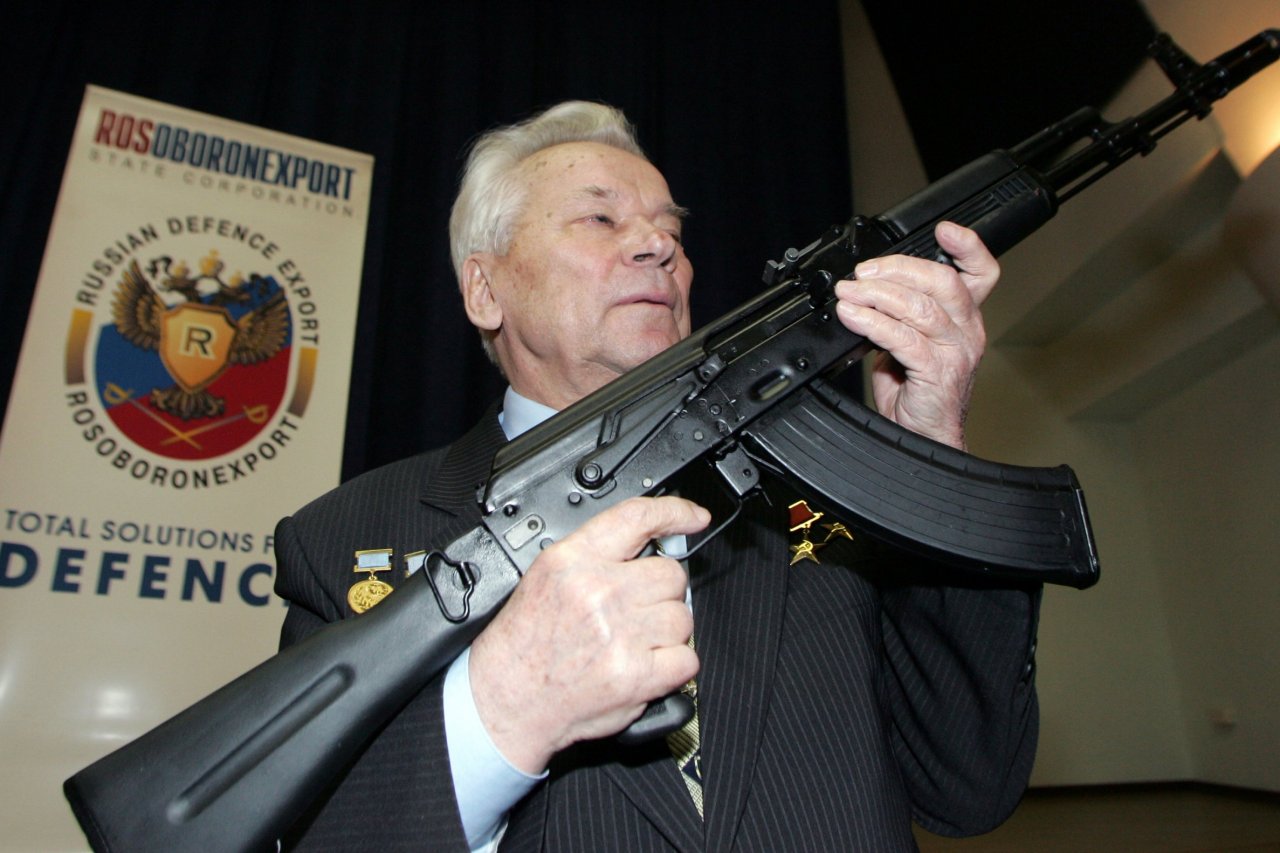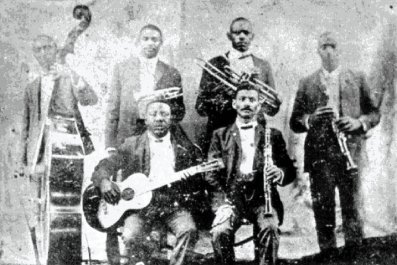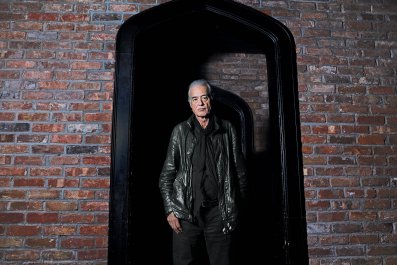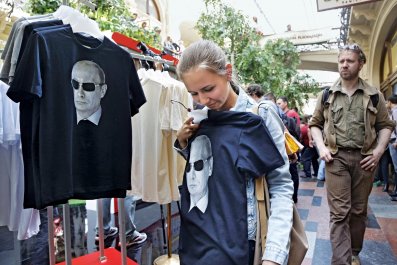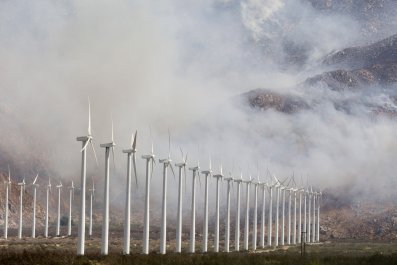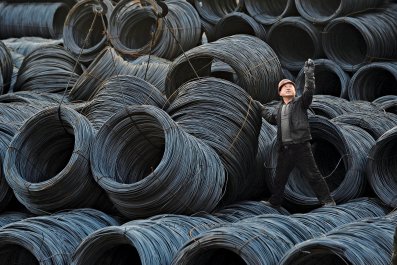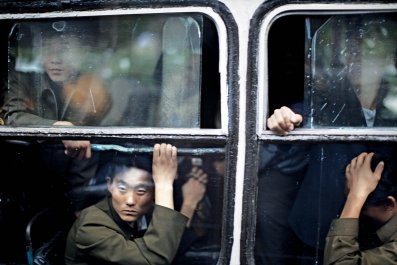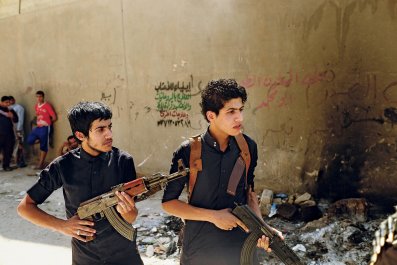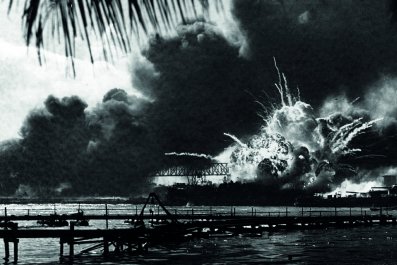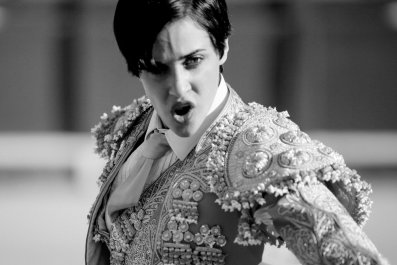When the late Mikhail Kalashnikov set about designing the devastating killing machine that the world knows as the AK-47 assault rifle, he applied some hard lessons learned while commanding a Red Army tank during the second world war. Recovering from a severe wound in hospital, he remembered how Russian soldiers would curse their antiquated and unreliable rifles, prone to jamming in action. What was required for future conflicts, Kalashnikov concluded, was something along the lines of the light, ultra-dependable automatic weapons carried by the German troops he had been fighting.
Two years later, in 1947, his meticulously detailed blueprints resulted in the first Avtomat Kalashnikova rolling off the production line at the Izhmash arms factory in a small town in the western Urals region. At that moment, the face of modern warfare was changed forever: by most estimates, there are now around 100m AK-47s in circulation around the world. They turn up in virtually every conflict zone, often costing less than the price of a new mobile phone: in some parts of Africa, they are so common that "Kalash" has become a popular boy's name.
Fast forward to 2010 and the workaholic Kalashnikov, who died last December laden with honours and received a state funeral, was still clocking in at the Izhmash plant, now engrossed in another challenging project: the development of a new high-tech assault rifle for use by Russia's armed forces. Designated the AK-12 model, it was to be based broadly on his cheap and simple original design but incorporated an array of modern battlefield aides, from laser targeting to night vision sights, that would have astounded his old Red Army comrades. Like its iconic predecessor, the AK-12 would weigh in at only three kilogrammes, a boon to weary infantry troops lugging around all the paraphernalia of modern warfare.
In September last year, a senior Russian government official, Oleg Bochkarev, announced that the new rifle would be going into operational service with the army by the end of 2014 as part of a massive expansion of the military budget that was expected to double weapons production. A few days later, Vladimir Putin arrived in the Urals for a tour of the Izhmash factory and was presented with a prototype model before a scrum of photographers. Yet behind the scenes, the project was already deep in trouble: with millions of surplus earlier model Kalashnikovs still on its hands , the army high command would not commit to purchasing the AK-12.
According to Russian media sources, field tests involving prolonged exposure to extremes of heat, cold and humidity, plus some rough handling by soldiers to simulate combat conditions, had revealed serious defects in the weapon – something that would have mortified its notoriously perfectionist designer. The military was also concerned about the deteriorating financial condition of Izhmash: at one point Kalashnikov organised a workplace petition imploring Putin to save the ailing company from collapse.
Even so, the billionaire Russian entrepreneur Aleksei Krivoruchko, who co-owns what is now known as the Kalashnikov Concern, remains confident that once its problems have been ironed out, domestic and export sales of the AK-12 will "restore the brand to its former glory and amplify the name of the legendary gunsmith in Russia and beyond".

Time will tell, but until a significantly better weapon comes along, it's safe to assume that the AK-47 will continue to dominate the world's battlefields for years to come: the standard infantry rifle for the armed forces of some 80 countries, it is also cherished by liberation movements, Islamic militants, Mexican drug cartels and Somali pirates for its exceptional ruggedness and the beguiling simplicity of a weapon with just eight moving parts to maintain. During the savage civil war in Liberia in the 1990s, I came across a ragged child soldier cradling a battered and rusty AK-47 that had been manufactured four decades before he was born. After stripping it down and re-assembling it with practised ease, he fired off a celebratory burst that left my ears ringing.
American infantry "grunts" fighting in Vietnam were also confirmed admirers of the sturdy weapon's reliability in the most challenging conditions. A Marine sergeant showed me one he had recovered from a water-logged ditch: "this old piece was probably lying in the mud for weeks," he said, " but you can bet your arse it'll still do the job in a firefight". In sharp contrast, his far more sophisticated (and costly) standard-issue M16 rifle had struggled to cope with Vietnam's heat, dust and sweltering humidity: after it had let them down in action, many combat veterans carried a toothbrush in their webbing to clear dirt in emergencies.
Besides its supreme battlefield credentials, Kalashnikov's brainchild – instantly recognisable by its banana-shaped ammunition magazine – has also found a place in pop culture, featured on countless Che Guevara posters and T-shirts. The renowned rapper Ice Cube has sung its praises while posing with the weapon – sample lyric: "It was a good day/ Didn't have to use my AK" – while singer Rihanna has been known to adorn her front teeth with a tiny, solid gold model of the gun. It was also name-checked memorably in Pulp Fiction where Samuel L Jackson's laconic hitman observes with relish that nothing beats the AK-47 "when you've absolutely, positively, got to kill every motherfucker in the room".
Some 20 years before Kalashnikov died, I interviewed him on a crackling phone line with the aid of an interpreter: before I could get a word in, he began complaining about the Western media portraying him as the man who made a fortune from a weapon that has spilled oceans of blood around the world. "The AK-47 was created solely to protect the motherland's borders," he protested. "If it's sometimes used where it shouldn't have been, that's the fault of the politicians. I can assure you that I still sleep well." As for enriching himself: "Please understand that I have never made a single ruble over and above my salary from the state, and if you came to my house, you'd see how modestly I live."
As Kalashnikov told it, the AK-47 design had not been copyrighted internationally, which meant he had missed out royalties for the many thousands of bootleg rifles knocked up in scores of other countries, with China among the main offenders. He was rather less forthcoming when I asked if he'd made any money from the sales of vodka in bottles shaped like the AK-47 by a company run by one of his grandsons. We got on better after I told him I had once fired his legendary rifle at a British army range and been impressed by how easy it was to handle, with barely any recoil. "When you're designing a weapon for use by conscripted peasant boys," he observed, "it's much better to keep things simple."n



